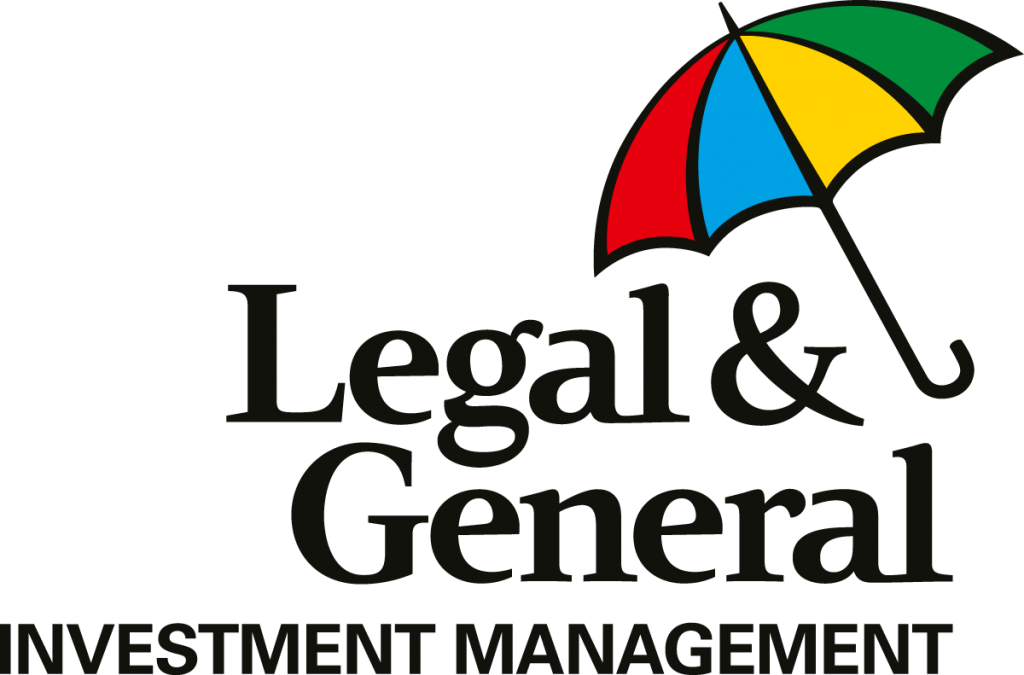Volatility, economic downgrades and fears of a rise in defaults may have some public market debt investors concerned, but there is an alternative for those who manage income-generating portfolios. Private debt secured against tangible assets, such as property and infrastructure or issued by housing associations and utilities, could provide a much needed layer of security during such troubled times.
Indeed, secure income assets offer an illiquidity premium and could provide downside protection at attractive valuations, if you know where to look. To explore this assets class, and examine its benefits, risks and the role it plays in portfolios, we spoke to the private credit team at Legal & General Investment Management to find out how to navigate the secure income asset universe.

- Stuart Hitchcock, head of portfolio management, private credit
- Amie Stow, senior investment specialist, private credit
- Samuel Jones, private credit fund manager
Are secure income assets being overlooked?
As activity in public credit markets has oscillated across our screens, private credit markets have been largely overlooked. In our view, this is an oversight for investors as we believe the attributes associated with private debt become more valuable during periods of uncertainty. We advocate that a portfolio of secure income assets – real estate debt, private (unlisted) corporate debt and infrastructure debt, collectively referred to as private credit – can deliver better downside protection, attractive valuations and a depth of universe that is not available in the public market. We also outline where we see opportunities to generate a positive return and a positive outcome for society as the economy starts to heal from Covid-19.
Better downside protection
Seniority in the capital structure, security and stringent covenants enables private credit to demonstrate higher recovery rates, on average, than public credit¹. With market uncertainty due to the global pandemic we believe these features have grown more valuable to investors. For example, the majority of secure income assets are senior in the capital structure and the documentation ensures that we preserve that position, meaning that if the borrower falls into distress and even bankruptcy, we should have an advantageous position relative to other investors. Security can also be beneficial. For example, having tangible claims on physical assets, such as property, will typically provide higher recovery values than debt secured against intangible assets.
Covenants are obligations to maintain certain credit metrics or restrictions on incurring further debt and are designed to protect end investors. As private investors, these enable us to engage and work with the borrower towards a positive outcome for our investors and themselves. Over the short term, we expect some borrowers to breach covenants prompting them to ask for an amendment or a waiver of the restrictions for a certain length of time. The benefit of the private market in these situations is that we should be able to take earlier action without having to make it public knowledge, preventing other stakeholders getting involved and allowing us to maintain value.
A study by the Society of Actuaries demonstrated that on average, recoveries are twice as good1 for superscript private credit compared to rated public credit. Given the disruption to most company’s business models as a result of Covid-19, structural protections should provide investors an additional layer of comfort relative to publicly-traded debt securities and are likely to be more valuable during such periods of uncertainty.
Attractive valuations
At the time of writing, investment grade public credit spreads are roughly 70bps² wider since the start of the year. As a result of data limitations in private credit, the re-pricing is not as transparent and will vary considerably by sector and underlying asset quality. What we believe will hold true is the roughly 55bps³ long-run average premium that private credit commands over public credit. This premium is not static and can range anywhere from 30bps to 120bps depending on the features of the transaction as well as the market environment. Typically, this premium is associated with the illiquidity of the asset class and the corresponding lack of transparency. However, as we have seen in recent weeks, liquidity has been challenging for public credit and has not always been there when investors have needed it. We argue that, over the life of the asset, the premium also reflects the value added by the structural protections as discussed above. As a result, when pricing a private security, we take a public credit spread, add an illiquidity premium and adjust for the lower expected loss given default, or add a ‘structural premium’.
In our view, rates will remain ‘lower for longer’ over the medium term as the global economy recovers from Covid-19, which should cause investors to continue to favour income producing assets. While we expect the private and public markets to move in the same direction, we will be looking to take advantage of any dislocations in long-run premium to selectively increase exposure in this asset class.
Depth of universe
While the US private and public credit markets have been very active over the past couple of months, hitting record bond issuance, the UK market has been more muted. We expect it to follow suit once some market confidence returns and this will mean that there are substantial financing needs in the private markets, especially as banks may not be as willing or able to lend. For example, in private corporate debt, we have already received calls from large public companies that would not traditionally issue in the private space.
In our view, this gives investors an opportunity to increase diversification in their portfolios, taking advantage of the breadth of private sectors versus publics. In addition, we believe investors will be able to access scarce high-quality assets such as higher education institutions, which are likely to issue debt in the short to medium term. Looking further ahead, we also expect opportunities in BB-rated credits. Here, structural protections may provide a safer entry point into credits where fundamentals are weaker. Greater access to management means we are often better able to diligence the recovery plan the borrowing entity is seeking to put in place and create value for our clients as a result.
Opportunities post Covid-19
Private (unlisted) corporate debt
Private markets remain open, offering funding without the same execution risk that can exist in public markets. Our focus will remain on companies which we believe have a defensive business model, robust capital structure and access to sufficient liquidity to see them through short term disruption. We expect opportunities from utilities, housing associations and higher education institutions.
Infrastructure debt
Transport has been in the spotlight as rating agencies have been quick to react (for example, airports) due to the significant impact on passenger movements. More broadly, most operational assets have strong liquidity positions, particularly those providing essential services to the economy. We expect opportunities from renewables (wind and solar) and digital (fibre and data centres).
Real estate debt
Due to Covid-19 large transactions have either been pulled or suspended dampening the debt pipeline. Retail and leisure will see opportunities in the distressed space, but this is not an area of focus for us. In our view, opportunities will be greatest in industrials (distribution and logistics), offices in core locations and the private rented sector.
- 1) Society of Actuaries 2003-15 Credit Loss Experience Study: Private Placement Bonds. Recovery reported on an unadjusted basis
- 2) Bloomberg, sterling investment grade credit spreads. 11th May 2020.
- 3) Average value premium at purchase versus a basket of comparable bonds for all deals conducted by LGIM Real Assets 2015-2019. The figures shown relate to past performance. Past performance is not a reliable indicator of current or future results and should not be the sole factor of consideration when selecting a product or strategy

A secure way to generate stable cashflows
With pension schemes increasingly turning cashflow negative and interest rates sitting at record lows, could secure income assets provide the returns they need? portfolio institutional spoke to a panel of experts in Legal & General Investment Management’s private credit team to find out.
How would you define a secure income asset?
Stuart Hitchcock: The Alternative Investment Management Association defines “private credit” as debt that is “not publicly traded such as many corporate bonds and is originated or held by lenders other than banks. It takes various legal forms including loans, bonds, notes or private securitisation issues”. At LGIM, our secure income proposition is driven by private credit, and we have expanded the above definition to all non-public transactions. The opportunity within private credit is very broad and can be characterised by either return maximising or capital preservation strategies through debt investment that generates long-term secure cashflows.
A key attraction of the asset class is the provision of (and ability to negotiate) agreed protections. This differentiator from public credit often leads to better experience in default cycles, where recovery rates for private credit tend to be much higher.
Private corporate debt encompasses financing to companies borrowing outside public markets. Examples of particularly vibrant sectors issuing private corporate debt at present include housing associations, higher education institutions and utilities.
Infrastructure debt is the debt financing of infrastructure assets such as energy (including renewables such as wind farms and solar), transportation and social infrastructure (e.g. education and healthcare).
Real estate debt involves lending secured against all manner of property sub-sector types (office, industrial, retail, residential (including build-to-rent, mixed use and alternative) where the rental income supports interest payments and the property provides security.
What impact has Covid-19 had on these assets?
Hitchcock: Private markets have operated as we anticipated. There are two principle ways to look at impact – new issuance and existing asset performance.
Generally speaking, private debt markets are not “window” markets in the way that the public markets tend to be, partly because of the breadth of borrowers across the private asset classes and the covenant and structural protections, which investors truly value.
Overall, private markets have remained open, a dynamic we also witnessed during other major economic events, including the global financial crisis. Inevitably, markets were quieter during the latter part of March, with issuance principally driven by less-cyclical sectors such as utilities and consumer non-cyclicals – these receive very positive interest when markets are more volatile. Momentum has quickly increased. Some fantastic investment opportunities are coming through and we have been deploying for our clients to take advantage of credit quality and returns offered. Our focus remains on the companies that we believe have a defensive business model, robust capital structure and access to sufficient liquidity to see them through the short-term disruption. In the UK, this notably includes current opportunities in utilities, housing associations, higher education, transportation (backed by committed lease payments for essential assets) and major city real estate (office) spaces.
From an asset class perspective, private corporate markets remained open throughout, offering funding without the execution risk that can exist in other markets.
New issuance in infrastructure has been impacted by Covid-19. Transport has been in the spotlight as rating agencies have been quick to react, particularly on airports and related assets. More broadly, most operational assets have strong liquidity positions, specifically those providing essential services to the economy. Opportunities in the near term include renewables and we expect to begin to see activity in the digital/data centre space. It is interesting how Covid-19 has highlighted certain dynamics (e.g. working from home) that are likely to create an array of opportunities for institutional investors. Arguably, the real estate space has been the most affected over the short term but the pipeline of high-quality opportunities remains strong. Some sizeable transactions have been put on hold because financing is often related to purchases of large assets by sponsors and there is currently a level of valuation opacity. Notwithstanding, we have been able to commit to financings during the period, notably for existing borrowers, which underlines the advantage of an established investment base.
In the context of asset management, Covid-19 has intensified focus but also reinforced our selective investment approach over the past few years. We have been focused on stability of income and the robustness of companies over cycles. There has been a benefit, of investing in good credits, supported by structural protections that give us early warning signs of performance trending and, importantly, an ability to “get to the table” and engage early with borrowers.
Overall, the portfolio has performed in line with expectations. Whilst recognising that economic volatility can lead to sudden and significant movements in business profile, it is very pleasing to confirm that there has been no interruption to income.
and no expected impairment or loss; to my mind, this means the portfolio is delivering in line with our investment thesis.
So, despite the crisis it is business as normal?
Hitchcock: Broadly speaking, that’s right. We are inevitably focused on how the crisis will unfold and, as I mentioned, markets have been a bit quieter in certain spaces (as expected), but ultimately are continuing to move along as we anticipated. We have a strong pipeline.
What returns can investors expect in these markets?
Hitchcock: The overall aim of our Secure Income Fund is to generate an average return of Gilts plus 250bps.
Over the past number of years, we have been able to generate a return of more than 50bps to comparable assets in the publicly traded markets. In the current markets, the premium range is wider at approximately 30 to 120bps+, and with spreads north of where they were, the ability to generate strong returns to public markets has increased.
What is your modus operandi in this market?
Hitchcock: Our modus operandi is to optimise portfolios for our clients and to invest in a thoughtful way that generates good long-term returns that are stable and secure.
We do this through investment in a variety of private debt asset classes. This provides more than simply the opportunity to harvest illiquidity or complexity premia. It offers diversification by sector and company, and enhanced documentary protection, which combine to provide through-the-life returns typically above public benchmarks.
As long-term buy and hold investors we are not overly concerned about short-term fluctuations in value that are driven by wider markets. Over time, portfolios benefit from access to better structured transactions and with a diversified investment mix.
One of the advantages we have is that we are resourced in a way that enables us to source and manage sizeable portfolios of investments. We employ experienced sector experts who can source extensively and innovate structurally (in a low risk way). Our scale and expertise means that we can invest in a range of attractive asset classes and, furthermore, analyse the relative attractiveness of those investments so as to deploy monies prudently.
How are you sourcing these assets?
Hitchcock: We are not driven by a particular channel of origination, although there are clearly advantages of accessing the markets in certain ways. Overall, we think there are advantages (and disadvantages) with each of different approaches. However, since our fundamental driver is seeing the widest possible universe of opportunity, to allow us to be selective in deployment, we are channel agnostic. We believe there are three principal methods of investment sourcing: i) agents (e.g. banks)/advisers, ii) sponsors/advisers, and iii) direct (borrower).
In various ways, the methods of sourcing are not independent and market participants overplay the channel argument. Some of our competitors focus on direct origination because they believe it achieves larger allocations – they might also argue for better structural protections and returns, although practical experience suggests this is debatable. The playing-field of investors able to successfully and consistently originate directly is further limited by the resource and experience required. In reality, some of the most attractive investment spaces focus on more traditional sourcing from bank agents. Not only does this provide access to the widest possible universe of opportunities but it also maintains relationships with the organisations that bring opportunities. As one of the largest investors in our markets, the method of origination is far less important than attaining the right investment opportunities for our clients.
Laura Brown: Our scale in these markets is hugely important. A big part of our business is managing secure income assets for Legal & General’s annuity business. With that scale we have a lot of market access that allows us to get into these processes early and shape transactions.
How are you managing risk in this market?
Hitchcock: We take a stringent approach to ensure we engage with all borrowers, and that we are analysing and stress testing the potential impacts of cycles, and looking at potential impacts on performance.
Our asset management policy requires regular analysis and reviews on all of our investments and communication with all borrowers. We are constantly monitoring our assets and ensuring that we are positioned in case action is required.
PI: Where does secure income sit in your clients’ portfolio?
Amie Stow: Secure income assets are a core part of a cashflow-driven investing strategy.
Many of our clients will already have liability-driven investment and buy and maintain credit portfolios. Secure income strategies sit alongside those.
It has long been the case that large pension schemes have been able to access these assets, but we have been looking over time to extend access to a wider range of pension schemes. That has been a big part of the work that we have been doing, to package these investments into a fund that can be easily accessed.






